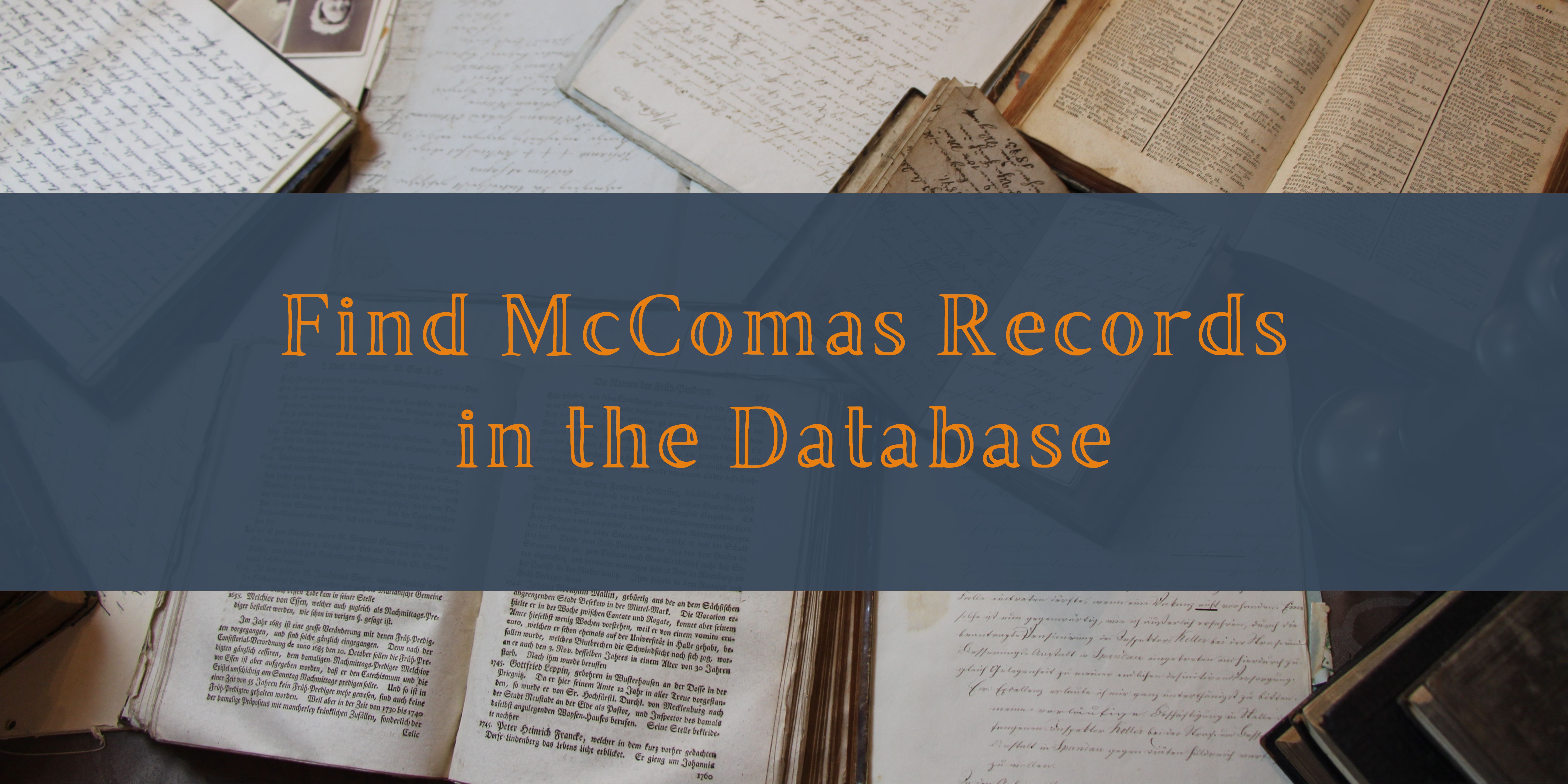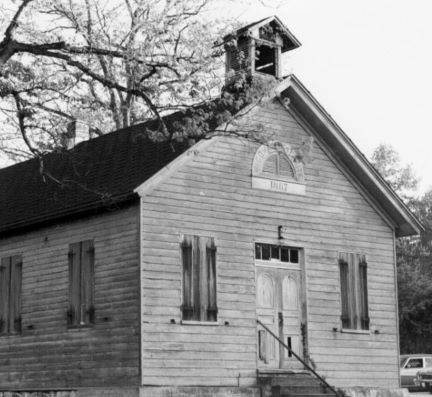The Beginnings of the McComas Institute during Reconstruction
The Bureau of Refugees, Freedmen, and Abandoned Lands, commonly referred to as the “The Freedmen’s Bureau” today was established on March 3, 1865 and operated until June 30, 1872.[1] The purpose of the bureau was to help newly freed Black and poor white people establish themselves as American citizens and to support them with necessities such as housing, food, clothing, health care, and education. While there is no official definition of what constituted a “Freedmen’s school,” Freedmen’s Bureau documents and much of the secondary literature on education and Freedmen’s schools seems to have agreed that at the very least to be considered a Freedmen’s school said school must have been supported by the Bureau in some capacity, most commonly in the form of funding.
Black Reconstruction in America 1860-1880 by scholar W.E.B. DuBois details the role and founding of public schools through the support of the Freedmen’s Bureau. While DuBois does not discuss in great detail the Freedmen’s Bureau effect on education in Maryland, he does explicitly mention education in Maryland and provides some financial context. DuBois explains that prior to 1865, local authorities supported public schools and following the end of the Civil War public schools then became controlled by the state. Along with a transfer of control, the law of 1865 said that a portion of school taxes which colored men paid were to be given to Black schools. Three years later in 1868 the law changed and instructed that there would be a ten cents tax placed on one hundred dollars for state schools which were all colored schools received until 1872 other than donations by various organizations or individual philanthropists.[2] Essentially, without the help of the Freedmen’s Bureau as well as benevolent and aid societies, most Colored schools would not have been established or been able to maintain the necessary funds for a school’s operation.
DuBois also highlighted the financial inequities between the white and Colored Schools stating, “In 1872, the state appropriated $50,000 for the colored schools, in addition to the colored tax; but the white schools received all the regular school tax. In 1878, the sum of $100,000 was appropriated, to be taken from the state school fund at the expense of the white schools. This remained the law until 1888. Baltimore had before the war at least six private schools taught by colored people, and later, Northern philanthropists founded schools for the freedmen.”[3] There were approximately sixteen Freedmen’s schools in Harford County during the Reconstruction period. This report will focus on the founding of McComas Institute. As well as its history and significance in relation to the Black community of Harford County, Maryland.
The McComas Institute was founded in 1867. The school was named after George March McComas, a prominent white tobacco farmer who supported anti-slavery efforts and the education of Black people. According to the deed for the McComas Institute, on September 10, 1867 the trustees of the Mount Zion African Methodist Episcopal Church purchased one acre of land from George and Mary Ann Johnson for $30.[4] The deed states, “the purpose of erecting thereon a school house for the use of the colored people of Harford County forever.”[5]
Reverend Peter Bishop was the founder of Mt. Zion AME Church in 1865. He served as a trustee for the McComas Institute. In 1867, the Harford County Board of School Commissioners, partnered with Mt. Zion Methodist Church to help with constructing the McComas Institute under the leadership of Rev. Peter Bishop. The McComas Institute was a Freedmen’s school named in honor of George McComas, an abolitionist and tobacco merchant. Rev. Peter Bishop also assisted with organizing a committee which formed the Board of Directors for the school. Peter Bishop is listed in the 1860, 1870, and 1880 U.S. Census Records.[6] He appears twice in the 1880s records.[7] He was listed as living in Churchville in the first record and Abingdon in the second record. He also has a wife (Rachel Bishop) listed in the second record. Rev. Peter Bishop served the church, community, and supported the McComas Institute for many years until his death.
The Freedmen’s Bureau monthly teacher’s reports provide evidence of some of the earliest teachers at the McComas Institute. Miss Addie V. Green first appears in the Freedmen’s Bureau Records in the “Records of Complaints, 1865-1872.” A complaint filed on June 30, 1868 by Addie V. Green describes that she is staying with someone by the name of Jessie Thompson at the Carroll Manor. Green claims that Thompson refused to pay her wages for her labor. As well as made threats towards her and refused to let her go. She requested help from the Bureau in order to get away from Thompson. The record also states that the “complainant is 65 years old and mute.”[8]
Green appears in several more Superintendent of Education records and reports from October to December of 1868.[9] She then falls out of the Bureau’s records as a teacher for the McComas Institute. She appears again briefly in July of (year) in a complaint record from Fallston, where she is requesting the assistance from the Bureau to help with the release of four children to the custody of their uncle and aunts as they were being unlawfully kept by a man named Mr. Lee Magness.[10] This complaint helps to show how much Miss Green cared for her students and her willingness to advocate for both their education and wellbeing.
Miss Louisa C. Waters commonly referred to as “L.C. Waters” in the monthly school reports, began teaching at the McComas Institute from 1869 to 1870. The reports suggest that Waters took over as Green’s replacement since there are no further mentions of Green’s association with McComas after 1869. According to an 1870 U.S. Census Record, Waters was born in Massachusetts around 1850. She was 20 years old at the time of the 1870 census. She is listed as a school teacher and lived with George McComas in 1870. She taught at McComas Institute approximately from October of 1869 to June of 1870. Waters begins to appear in the records in October of 1869 which suggests that she took over for Richard L. Mason following the summer break.[11] Many of the teachers who taught at Freedmen’s schools were from Northern states. While it was common for teachers to live and board with people in the local community since they typically were not natives of the southern states, it was less likely that they would have lived at the home of a white person.
Waters briefly left McComas for about three months to teach at the Snow Hill School in Worcester County before coming back to the McComas Institute. Due to the lack of educators and funding, teachers who taught at Freedmen’s schools often moved around a lot. Many did not remain at school for a full year.
An undated letter from teacher Louie C. Waters states: “There are not many small children living in the immediate vicinity of the school, and the larger ones are working. The “Baltimore Association” will be discontinued after June 30th but I should like very much, to continue teaching. Will you please give me a position after that time, should there by any vacancies? My school numbers forty at present and is progressing I trust, in point of intelligence.”[12] Although the letter has no date, Waters concern that the Baltimore Association, an organization with the goal of improving the education of Black Americans following emancipation, would be discontinued suggests that this letter was written at the end of the academic year in the 1870s since the Freedmen’s Bureau disbanded in 1872 and Reconstruction ended in 1877.
Richard L. Mason appears in the Freedmen’s Bureau Records from January to May of 1869. He takes over as the teacher of the McComas Institute in place of Addie V. Green. Unfortunately, Mr. Mason does not appear in any other records so his background is unclear. He also does not come up in the 1850, 1860 or 1870 U.S. Census Record for Harford County or Maryland in general which suggests that he left the county and perhaps was assigned to teach in another state. He was also one of the few male teachers who taught at a Freedmen’s school in Harford County.
While the Freedmen’s Bureau did help to support the schools, the records show that often the majority of the labor that went towards building and maintaining the schools was not provided by the bureau. The local Black communities on average contributed anywhere from about 70% to 90% of the labor and funding for the schools. Often various organizations such as the American Mission Association and the Baltimore Association for the Moral and Intellectual Improvement of the Colored People, which focus on providing and improving the education of Black Americans would help provide materials such as books and furniture for the schools or supplement the pay for the teachers salaries. Both the Freedmen’s Bureau along with the Baltimore Association financially supported the McComas Institute from 1867 to 1872.
By Danielle Bing
[1] Records of the Assistant Commissioner and Subordinates Field Offices: RECORDS OF THE FIELD OFFICES FOR THE STATES OF MARYLAND AND DELAWARE, BUREAU OF REFUGEES, FREEDMEN, AND ABANDONED LANDS, 1865–1872, United States Congress and National Archives and Records Administration Washington, DC 2003, 3. https://www.archives.gov/files/research/microfilm/m1906.pdf.
[2] W.E.B. DuBois. Black Reconstruction in America 1860-1880. New York: The Free Press, 1935, 566.
[3] Ibid.
[4] Original McComas Deed. 1867.
[5] Ibid.
[6] "United States Census, 1860", , FamilySearch (https://www.familysearch.org/ark:/61903/1:1:M694-X8Y : Thu Oct 05 07:33:54 UTC 2023), Entry for Peter Bishop and Rachael Bishop, 1860. "United States Census, 1870", , FamilySearch (https://www.familysearch.org/ark:/61903/1:1:MN3F-721 : Tue Oct 03 14:12:21 UTC 2023), Entry for Peter Bishop and Neal Curtis, 1870.
[7] "United States Census, 1880", , FamilySearch (https://www.familysearch.org/ark:/61903/1:1:MNQG-2Y6 : Thu Oct 05 20:12:43 UTC 2023), Entry for Bennett Green and Charity Green, 1880. "United States Census, 1880", , FamilySearch (https://www.familysearch.org/ark:/61903/1:1:MNQG-46P : Tue Oct 03 16:48:49 UTC 2023), Entry for Petre Bishop and Rachel Bishop, 1880.
[8] "Maryland and Delaware, Freedmen's Bureau Field Office Records, 1865-1872," images, FamilySearch (https://familysearch.org/ark:/61903/3:1:3QSQ-G9MX-C9WM-L?cc=1989156&wc=9C3M-SP2%3A266115701%2C266120801 : 22 May 2014), Complaint division > Roll 37, Register of complaints, vol 2 (18), Jan 1868-Mar 1872 > image 92 of 188; citing NARA microfilm publication M1906 (Washington, D.C.: National Archives and Records Administration, n.d.).
[10] "Maryland and Delaware, Freedmen's Bureau Field Office Records, 1865-1872," images, FamilySearch (https://familysearch.org/ark:/61903/3:1:3QS7-89MX-C9QB-G?cc=1989156&wc=9C3M-SP2%3A266115701%2C266120801 : 22 May 2014), Complaint division > Roll 37, Register of complaints, vol 2 (18), Jan 1868-Mar 1872 > image 99 of 188; citing NARA microfilm publication M1906 (Washington, D.C.: National Archives and Records Administration, n.d.).
[11]"United States Census, 1870", , FamilySearch (https://www.familysearch.org/ark:/61903/1:1:MN3F-R1X : Tue Oct 03 17:18:35 UTC 2023), Entry for Louisa Waters and Geo McComas, 1870.
[12] Letter from teacher Louie C. Waters at McComas Institute, N.D. https://transcription.si.edu/view/14939/NMAAHC-007675725_01511.


